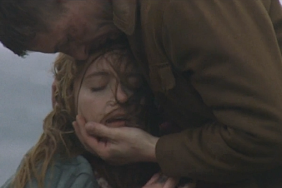RED CLIFF
Directed by John Woo
Starring: Tony Leung, Chiu Wai, Takeshi Kaneshiro, Fengyi Zhang and Chiling Lin.
Adaptations and historical renderings are always tricky feats, but to condense a Chinese epic based on a battle that changed the course of Chinese history into a standard feature length to be digested by a worldwide audience – Asian and Westerners alike … well that’s an epic achievement in itself.
Based on the aforementioned battle, Red Cliff begins in the China of 208 AD where Prime Minister Cao Cao (Fengyi Zhang) from the North seeks to claim the territories of Lui Bei (Yong You) and Sun Quan (Chang Chen) from the South and West. Using his great influence he persuades Han Emperor Xian (Wang Ning) to give him to go ahead to crush the smaller warlords with the military might of 80, 000 soldiers. In the Southlands, Lui Bei and Sun Quan join forces and Lui’s strategist, Zhuge Liang (Takeshi Kaneshiro) must work with Sun Quan’s commander and viceroy (Tony Leung) to accomplish the seemingly impossible – defeat Cao Cao’s imposing army.
John Woo, as even his name suggests, treads the line between East and West convention and does so graciously in this film. Battle sequences are stamped with the slick Woo trademarks – doves and slow motion sequences – but when villains fly, arms flailing, metres through the air we know instantly that the film seeks to recognise that it is not only steeped in Chinese influence, but saturated. Red Cliff is not a subtle film, and the criteria of the epic genre does demand an amount of exaggeration. There’s lotsa blood, lotsa fire, lotsa tea sipping, lotsa wistful eyes, lotsa gorgeous landscape shots, lotsa war drums, and lotsa banged home poetics. Indeed, if anything, Red Cliff is a film of exaggeration and with ample exaggeration; Woo is indeed able to convey the sheer enormity of the battle of Red Cliff.
The epic David and Goliath-cum-Battle of Troy narrative screened in Australia is just the sliced and diced version of the real epic version that reportedly runs for almost five hours. And though thes international release feature length version works well as a film about warfare, it leaves you wondering what may have been missed. At a decent two and a half hours, brevity is not the word that comes to mind, though it is obvious that characters err more on the side of archetype and many subplots must have been omitted. The result is a classic battle film that revolves around strategies and tactics- the art of war. It is the noble and cultured Vs the greedy yet powerful traitor. The skilled and humble Vs the ignorant and bloodthirsty.
Woo’s film is not shy or subtle. The US$80 million budget has been poured into costuming and set and the final battle scenes of wooden naval boats inflames upon the water are of epic proportions. The final defeat of Cao Cao is similarly as symbolic and the exaggerated heroics that see his downfall roused a round of applause from a few members of the audience. But we allow Woo to play with such a large canvass – implausible theatrics included – for the sheer spectacle, for the clever tactics and because the original story was really quite extraordinary in the first place.
You will love this if: you are distracted by pretty, shiny things or stimulated by warfare tactics.
You will hate this if: you like your films with a serve of subtlety or demand depth of characterisation.
Red Cliff is in cinemas now.












